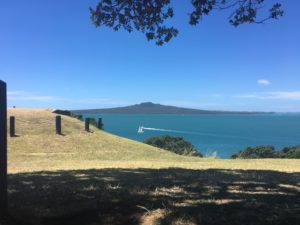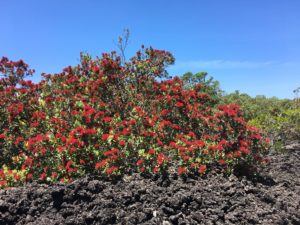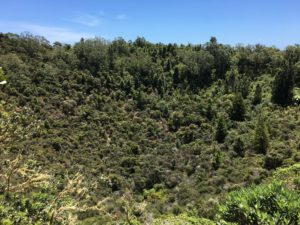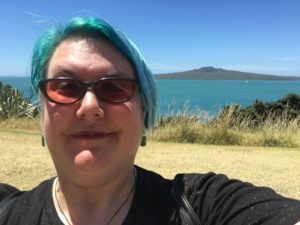 Geography, Psychology
Geography, Psychology  1 Comment
1 Comment The Year of the Volcano
I left for New Zealand with a conundrum packed in my carry-on: how I could I celebrate the winter solstice my soul needs this time of year in a place where it’d be the summer solstice? At first, I thought Midsummer’s Eve would be the answer, but the short night isn’t deep enough to sink into. Even in the dark, the smell of green things and the fresh sunset would puncture my illusion. My body would unfurl like a leaf in the evening warmth; no curling in to protect my blood-hot heart from the winter chill.
Two days before the solstice, I did something that the telling of which still feels blocky and foreign in my mouth: I climbed a volcano. Guarding and menacing the Hauraki Gulf, in the curve of Auckland, stands Rangitoto Island. It’s visible all along the North Shore, a compass point of dark green above the water. Locals like to remind visitors that dormant Rangitoto is overdue, like a spun-out pregnancy.
The landscape is both lush and austere: blooming trees and thick foliage growing around fields of hot black volcanic rubble. The higher you climb, the fewer basalt fields there are, and the jungle-like nature arches all around. The massive caldera looks like an Alpine valley.
But as I stood, looking down into that crater, my insight shifted and I saw living fire beneath that quiet forest floor. The rolling, arcing, molten center enfolded me just as the nourishing dark earth did, all in the same place. I felt grounded and explosive. I felt firm and strong and liquid and volatile. I was held in solid rock at the edge of heat so intense it melted both rock and body.
The barrier between these forces may seem stark. But the whole thing—the volcanic core and the blackness of rock and fertile soil—exist to create. The cataclysm that cracked the sea floor with fire and steam raised Rangitoto into being. What destroyed and choked and covered the sun in ash created a point on the surface of this planet that wasn’t there before. And atop that cooling land, rocky and barren, the nutrients that had churned in fire grew a vibrant diversity of plants, a biome that drew the lively creatures that formed the orchestral theme as we climbed. The island breathed in sea water around its porous edges, and filtered the gulf to turquoise clarity.
Another eruption is due. Rangitoto will destroy and create again. The destruction is not malicious; the creation is not joyous. But they will both be powerful and life-changing, no matter how small the event. Until then, the island is a vessel of potential. They call that dormancy, but there is nothing sleepy or restful about Rangitoto. It is patient. It waits. What looks like doing nothing couldn’t be further from the truth.
This is how I will create. The need to be still allows my fiery heart to fill and melt impurities. I cannot produce without this preparation; I am not losing time as I conserve my resources. Making changes that clear away old growth and connections is not cruel or unloving. Transforming stale material and ideas makes me stronger and more authentic. And I have the power to raise the earth and make something this planet has never known before. I am the volcano.




That last paragraph was a perfect verbalization of an epiphany I hadn’t yet been able to craft into thoughts or words, yet immediately, viscerally identified with: “I cannot produce without this preparation; I am not losing time as I conserve my resources.” Brilliant, succinct, and sooo helpful to me right now! Thanks!